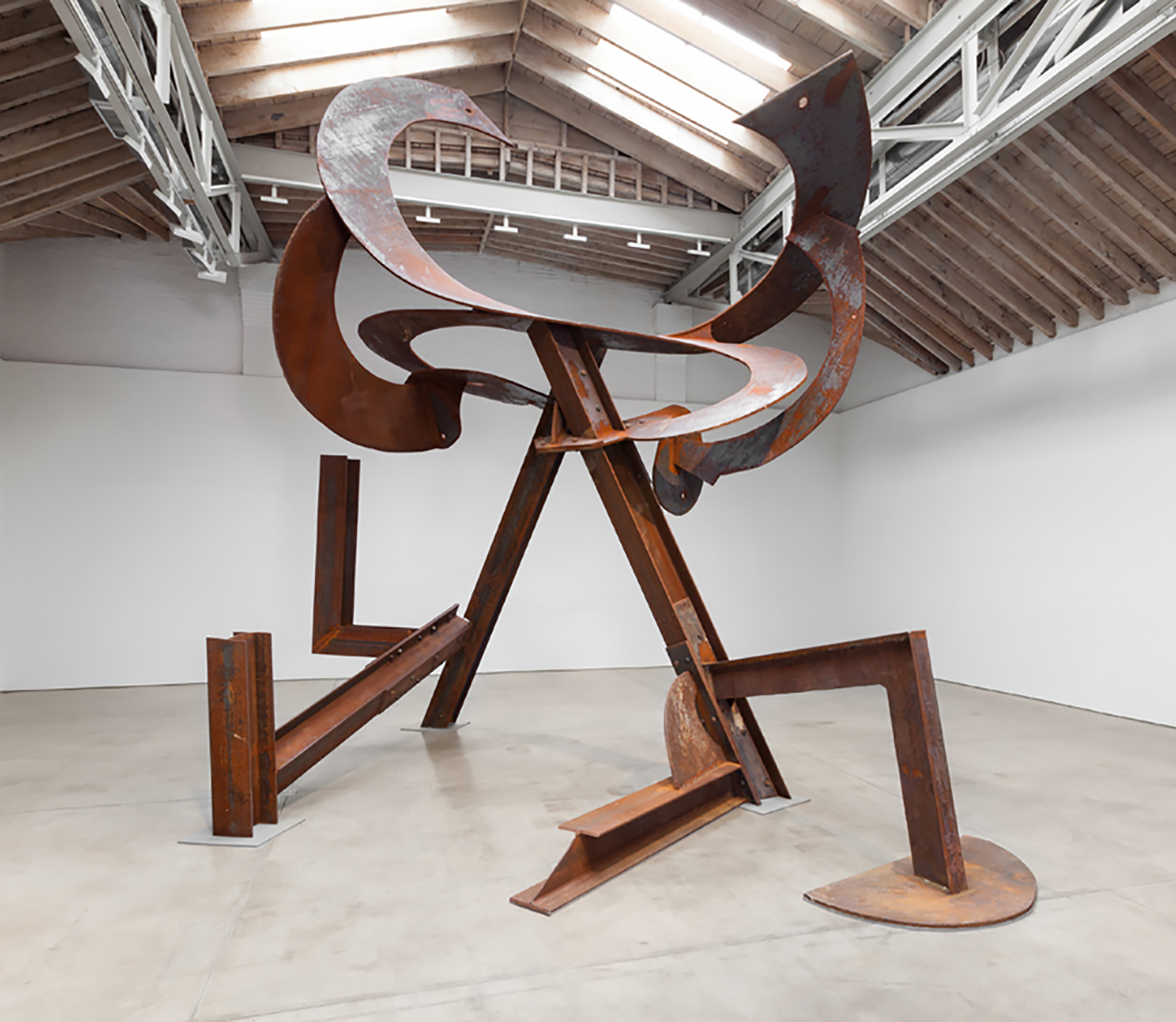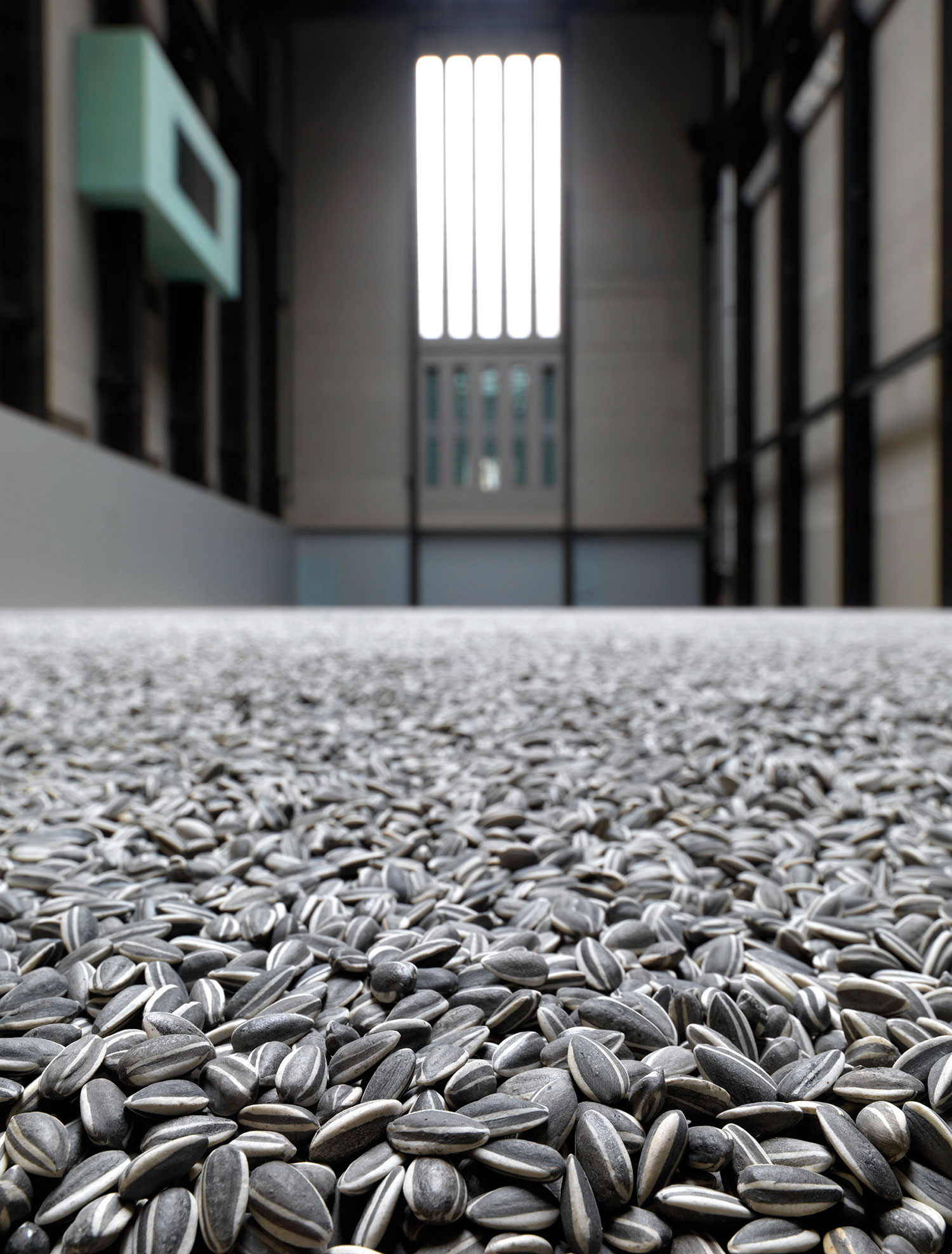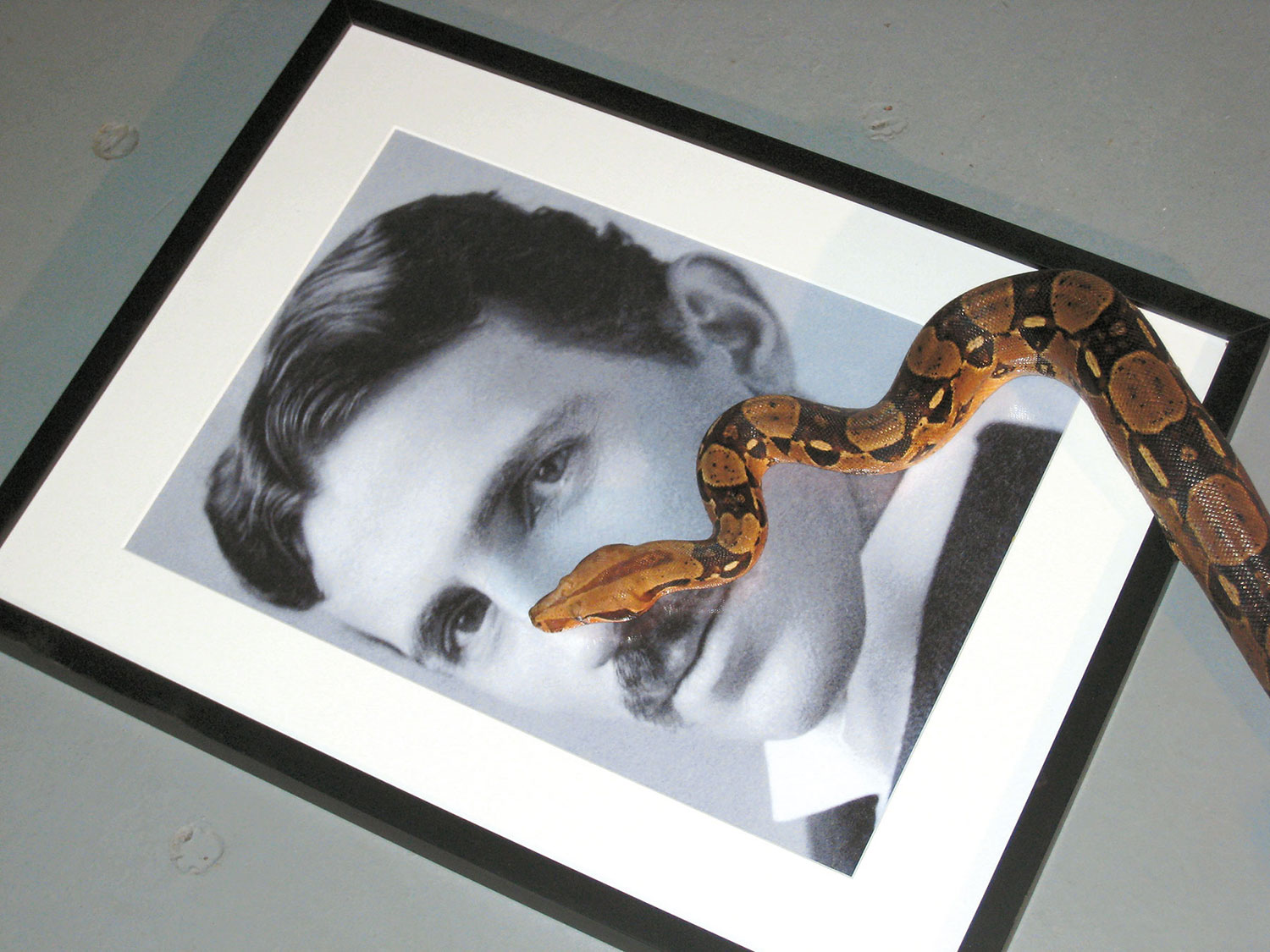
Elusive and recondite, Marcel Broodthaers was a poet for 20 years before he turned his efforts toward art production. His first artwork was made of copies of his published poems embedded in a mound of plaster. These concurrent exhibitions offer the chance to see a number of rarely seen works in audio and film by this poet turned artist. Broodthaers proved adept at incorporating declarative language with his visuals. Dying in 1976 at age 52, his trajectory seems prescient and influential. One wonders where the work would have gone had he lived longer.
An exhibition mounted in Germany in 1972 is re-created at Marian Goodman. A twisted play on the aura of the museum is presented in a dim basement atmosphere of black, white and gray with stenciled signage. A couple of director’s chairs sit off to the side across from the stenciled command “Silence.” Two films play on the end wall simultaneously. One film is projected on top of scattered squares painted with “fig 1,” “fig 2,” “fig A.” The second film is projected on top of a world map where the word “Politique” has been altered to read “Poetique.” The effect is collage-like; the footage shown is complex and varied, from Charlie Chaplin clips, to a ’70s fashion show with models holding numbered cards. The artist appears, pacing and smoking or sitting on a box, and reciting inaudible text while wearing a fake nose. Large words float across the “screens” or smaller words appear as subtitles; “Departement des Aigles,” “Musee,” “Allies” “Fragile,” “Museum.” Adjacent are objects; a toy piano painted black, shelves and documents, a dark room and film editing equipment, all creating a work lab atmosphere. In an adjoining room four short films play on demand, each a take on an artist or literary figure; Kurt Schwitters, René Magritte, Stéphane Mallarmé and Charles Baudelaire. Short, simple and amusing, one can see Broodthaers’ connection to the surrealist movement. Object oriented, the exhibition at Michael Werner explores similar themes, but many of the materials used are irreverent: a stuffed parrot, a stenciled cardboard box and postcards. There are early vacuum-formed plastic pieces that riff on the invented museum theme, Magritte’s pipe and Baudelaire. A rare oil painting titled Il n’y a pas de Structures Primaires (1968), reads like a tortured script with words crossed out and new ones added. Amusing and confounding, Panneau de Moules (1968), presents a dense cluster of real mussel shells in the form of a framed painting, while Untitled (1966), displays fragments of egg shells carefully painted, numbered and mounted. The use of disposable materials is juxtaposed with the idea of precious art forms.
Broodthaers’ work is a difficult read but there is poetry throughout. Questioning “what lasts” led Marcel Broodthaers to explore the idea of the museum and the role of institutions. There is a certain irony in that Broodthaers’ oeuvre is now treated with the institutional reverence he questioned.




